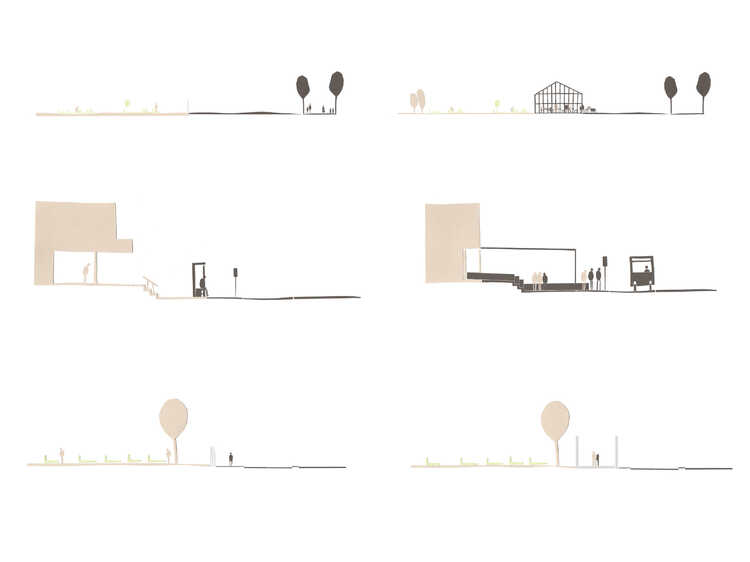A border can be a line but can also be a zone. This zone functions as a transition between two different places. By transforming a harsh border in between a collective and public space into a soft border area by stretching it, a space arises between those two different worlds. These new in-between spaces function as connectors between the two adjacent worlds. This principle works on different types of collective spaces with public space, for instance a cemetery where the wall becomes a space for silence, and in this way gives space for visitors of the cemetery to commemorate their beloved ones, and at the same time gives space to passers by to take a moment for them selves. The second location is an allotment garden where the fence becomes a greenhouse and opens in the weekends for public to come and enjoy what's grown in the garden. The third location is a retirement home where the entrance becomes a bus shelter, and in this way naturally connects the bus waiters to the elderly entering their home.
In this way, meaningfull places come to being where two adjacent worlds can meet each other. This idea fits in the sustainist way of thinking because it connects and integrates people to places and in this way creating sustainable connections in the city. This idea is a principle that can be applied in many different ways. My goal for me as a designer is to search for ways how to connect people and places in a sustainable and meaningful way.

Laat een reactie achter